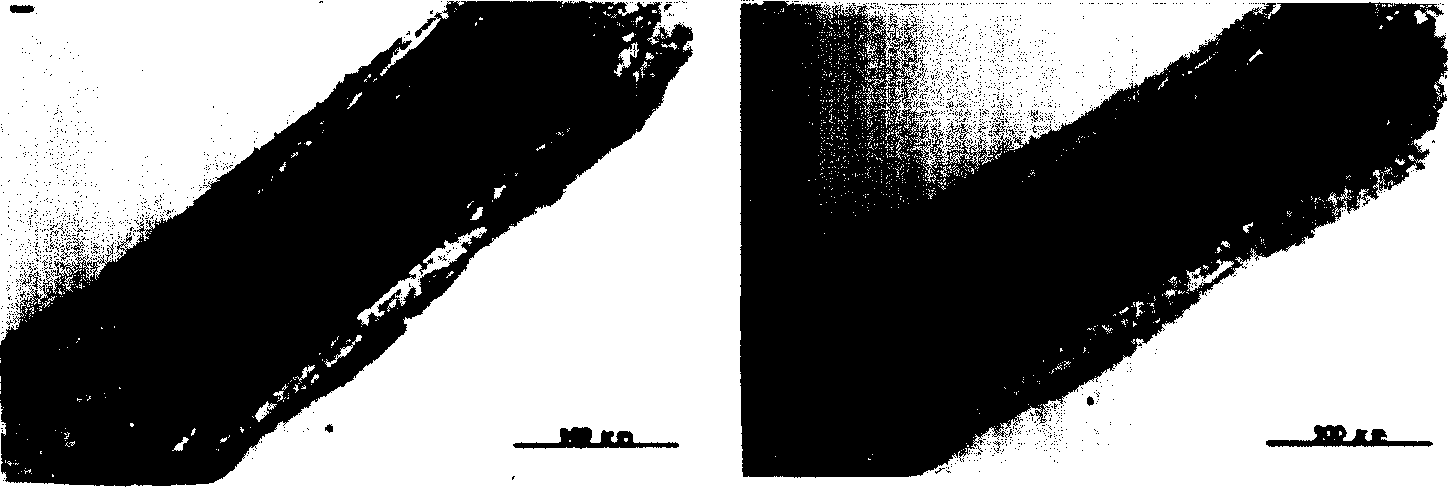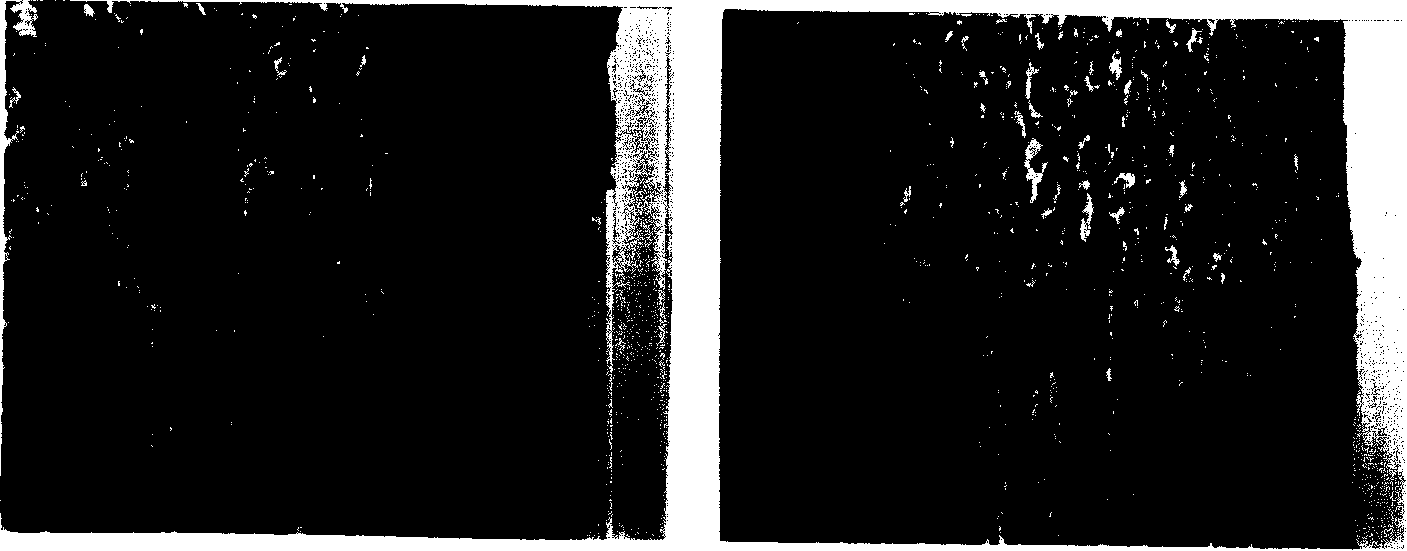Resist calcification modified method of heterogeneity biological organization material
A biological tissue and tissue material technology, applied in medical science, prosthesis, etc., can solve the problems of calcium salt deposition, no cross-linking, easy tearing, etc., achieve high tensile strength and elongation at break, biomechanical Enhanced performance, enhanced biostability
- Summary
- Abstract
- Description
- Claims
- Application Information
AI Technical Summary
Problems solved by technology
Method used
Image
Examples
Embodiment 1
[0087] Example 1 Using tannic acid alone to cross-link the bovine jugular vein with valve;
[0088] (1) Reagent preparation
[0089] 2.5% pH4.0 tannic acid solution: get 12.5 grams of commercially available tannic acid and dissolve it in 50mmol / LNa2HPO4 solution to 500ml, adjust the pH to 4.0 with hydrochloric acid.
[0090] (2) Material preparation
[0091] The bovine jugular vein pipeline with a diameter of 12-24 mm was collected and the length was about 10 cm. The fat and excess loose connective tissue on the surface were trimmed, and rinsed in D-Hank’s solution for later use.
[0092] (3) Cross-linking treatment process
[0093] 1. Rinse the inside and outside of the bovine jugular vein lumen with 2.5% pH4.0 tannin solution first, then fill the cavity with 2.5% pH4.0 tannin solution, and then insert 300ml of 2.5% pH4.0 Soak in a container of tannin solution for 48 hours at 32 °C.
[0094] 2. Before use, put the above-mentioned material treated by this method into norma...
Embodiment 2
[0114] Example 2 Synergistic crosslinking of tannic acid and glutaraldehyde to treat bovine jugular vein valved pipeline;
[0115] (1) Reagent preparation
[0116] 0.3% glutaraldehyde / 0.3% tannin mixed solution pH5.5: Dissolve 3ml of commercially available 50% glutaraldehyde solution in 50mmol / L Na 2 HPO 4 solution to 500ml, then take 0.5 g of commercially available tannic acid and dissolve it in the above solution, and adjust the pH to 5.5 with hydrochloric acid.
[0117] (2) Material preparation
[0118] Bovine jugular veins with a diameter of 12-24 mm and a length of about 10 cm were collected, the fat on the surface and excess loose connective tissue were trimmed, and rinsed in D-Hank’s solution for later use.
[0119] (3) Cross-linking treatment process
[0120] 1. Rinse the inside and outside of the cavity with 0.3% glutaraldehyde / 0.3% tannin mixed solution at pH5.5, then fill the cavity with 0.3% glutaraldehyde / 0.3% tannin mixed solution and put in 300ml Soak in a ...
Embodiment 3
[0141] Embodiment 3 Using tannic acid alone to cross-link the bovine pericardium;
[0142] (1) Reagent preparation
[0143] 1% pH5.5 tannic acid solution: prepare 50mmol / L Na 2 HPO 4 buffer solution to 500ml, then take 5 grams of commercially available tannic acid and dissolve it in the above solution, and adjust the pH value to 5.5 with hydrochloric acid.
[0144] (2) Material preparation
[0145] The collection area is about 8×8cm 2 Trim the fat and excess loose connective tissue from the bovine pericardium, rinse in D-Hank’s solution and set aside.
[0146] (3) Cross-linking treatment process
[0147] 1. Rinse the bovine pericardium material once with 1% pH5.5 tannic acid solution, then put it into a container containing 300ml of 1% pH5.5 tannic acid solution and fix it at 22°C for 96 hours.
[0148] 2. Before use, place the above-mentioned material treated by this method into normal saline and rinse it several times to remove residual tannin that has not been combine...
PUM
 Login to View More
Login to View More Abstract
Description
Claims
Application Information
 Login to View More
Login to View More - R&D
- Intellectual Property
- Life Sciences
- Materials
- Tech Scout
- Unparalleled Data Quality
- Higher Quality Content
- 60% Fewer Hallucinations
Browse by: Latest US Patents, China's latest patents, Technical Efficacy Thesaurus, Application Domain, Technology Topic, Popular Technical Reports.
© 2025 PatSnap. All rights reserved.Legal|Privacy policy|Modern Slavery Act Transparency Statement|Sitemap|About US| Contact US: help@patsnap.com



